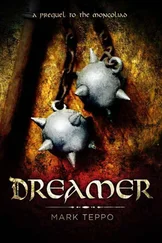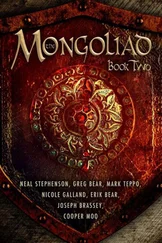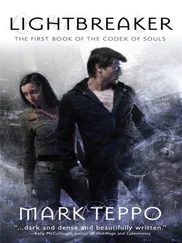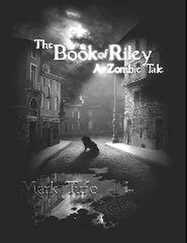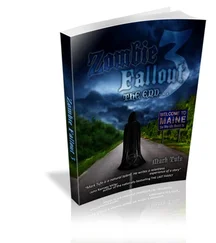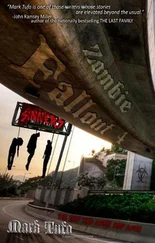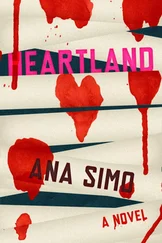Mark Teppo - Heartland
Здесь есть возможность читать онлайн «Mark Teppo - Heartland» весь текст электронной книги совершенно бесплатно (целиком полную версию без сокращений). В некоторых случаях можно слушать аудио, скачать через торрент в формате fb2 и присутствует краткое содержание. Жанр: sf_fantasy_city, на английском языке. Описание произведения, (предисловие) а так же отзывы посетителей доступны на портале библиотеки ЛибКат.
- Название:Heartland
- Автор:
- Жанр:
- Год:неизвестен
- ISBN:нет данных
- Рейтинг книги:4 / 5. Голосов: 1
-
Избранное:Добавить в избранное
- Отзывы:
-
Ваша оценка:
- 80
- 1
- 2
- 3
- 4
- 5
Heartland: краткое содержание, описание и аннотация
Предлагаем к чтению аннотацию, описание, краткое содержание или предисловие (зависит от того, что написал сам автор книги «Heartland»). Если вы не нашли необходимую информацию о книге — напишите в комментариях, мы постараемся отыскать её.
Heartland — читать онлайн бесплатно полную книгу (весь текст) целиком
Ниже представлен текст книги, разбитый по страницам. Система сохранения места последней прочитанной страницы, позволяет с удобством читать онлайн бесплатно книгу «Heartland», без необходимости каждый раз заново искать на чём Вы остановились. Поставьте закладку, и сможете в любой момент перейти на страницу, на которой закончили чтение.
Интервал:
Закладка:
I had found the landscape in question-a dreary picture of an empty lane; Sisley was big on the en plein air method of capturing the light, and his early works showed a lack of understanding that some periods of the day were better than others for creating an impression of nature-and saved my client a lot of money. I later learned she hadn't been the first to have been approached with this scheme. There was a scam going, involving forgeries of pieces buried deep in the gray area of museum acquisitions. My client had gone hunting, and last I heard, the underground market was still reeling.
A lot of art is a matter of learning by copying. Copies of other masterpieces, copies of the things the painter sees around him or her, copies of the piece they're working on in an effort to more fully articulate the idea caught in their head. Landscapes are easy: static, unchanging; you could come back over the course of a week, or a month, and the scene will be the same.
There was one eighteenth-century Impressionist who did more than a hundred versions of the same scene. Unlike Monet, who transcended the entire movement with the emotional verisimilitude of his watercolors, this painter's style was entirely unremarkable. My source at the British Museum had shrugged and said, "They're part of history; it's not our place to decide whether or not they're worth keeping."
The scene will be the same . Was this mosaic some view from Philippe's farmhouse? It had that nagging familiarity, as if it was the other scene: not the view out the front window, the one everyone remembered; but, rather, the view off the back porch. A vista seen but usually in context with something else. Something in the foreground that demanded your full attention.
A connection came together in my head. It was something I had seen, but not like this. Not so naked. Usually there was a stone in the foreground. A tomb marker. And other figures too. Shepherds, clustered around the stone, inspecting the inscription.
"Et in Arcadia ego," I said. It was a painting by Poussin; the Louvre had it. Seventeenth-century pastoral piece, thought to be cryptically symbolic for a number of pseudo-historical conspiracies. This tapestry was the same view, minus the stone and the shepherds. The world, unmarked by man. Still pristine, still innocent.
My guide nodded, a glimmer of disappointment in her eyes, and stepped back from the mosaic. A breeze touched my cheek, a tiny caress of wind that wasn't the product of some HVAC system. A natural aroma of foliage and blooming flowers filled my nose and I turned toward its source. The tapestry fluttered, the wind coming from the other side, and the intoxicating scent of a pure land, untainted by exhaust or sewage, was a heady ambrosia. I realized the tapestry was nearly transparent. The landscape wasn't a picture detailed on the cloth hanging between the columns, but it was what lay beyond the curtain.
I stepped forward, and was about to touch the fabric when the Chorus sparked against my side, reminding me of the stone in my coat pocket. I stopped, and reached for the hot rock I had brought with me from the beach at Mont-Saint-Michel. "Here," I said, offering it to the daughter.
"What is it?" she asked, making no motion to take the stone.
"What's left of Jacob Spiertz," I said. "Lose it somewhere in here, will you? And never catalogue it."
When the Spear had shattered the skull, most of the pieces went into the water and most of Spiertz's soul had been harvested by the Chorus. But not all of it. A tiny nugget had remained, a twisted coal of an emotional resonance with the faintest hint of a malignant personality. It wasn't much; but it was the Architect. If there were other pieces, they would be devoured by the sea. This stone had fallen above the tide line, and I had picked it up. Just so it couldn't grow into something larger. Lost in the Archives, it would never have the chance to do so again.
A smile ghosted across her lips, and after she took the stone, she transferred it to her other hand so that she could hold out her right again. "Nuriye," she introduced herself when I realized what she was doing and took her hand.
"Michael," I replied.
"Vivienne warned me about you," she continued. "Said you were the worst sort of bull."
I glanced around at the stacks. "This being her china shop, I suppose."
The ghost of a smile stayed on her lips as she raised an eyebrow, and that was as much confirmation as I was going to get.
"I'll try to be careful," I said.
"Please do." She hefted the stone. "This grants you some respect, but don't assume my vigilance is lessened in any way."
"Of course not."
Nuriye nodded toward the tapestry. "The way is open to you now. Go."
Dismissed and divested of my burden, I reached out to touch the fabric, expecting to feel the tapestry squirm in my hand, but all I encountered was marble tile. The picture still moved, but all I touched was polished stone. I had been fooled by an illusion. One that could even be nothing more than an image projected from behind me.
Turning to rebuke Nuriye about the bad joke, I realized I wasn't in the stacks anymore.
The world had moved, and only as I became aware of the shift, did it actualize and become solid. The stacks became walls, the tall ceiling lowered until it wasn't more than a few feet over my head, and the mosaic of the garden became a different picture.
Inside the cube, the Chorus hissed. They were riled up, unhappy about the sudden transition from one space to another, but my trio of wise men kept them calm. They had been here before. They were familiar with the way the inner sanctum admitted visitors.
The walls of the small room were made from large blocks of granite hewn from the earth with little grace. The stone was old enough that it no longer absorbed heat; it was just the cold and dead flesh of the Land.
Each of the four walls held only one picture, a large portrait centered so that the subject could look directly at the small sculpture in the middle of the room. The lower portion of the sculpture was about three feet high, round and vaguely Venus-shaped-like the archetypal figure found at Willendorf-though it was so old, any similarity may well have been a suggestion of the shadows on its mottled sides more than actual representation. The top was a basin, as if the supporting figure balanced a concave bowl on its head, and it was filled with water and light.
The eyes of the figures in the paintings reflected back the golden glow. I was alone, so I took a few minutes to examine the pictures. Three men, one woman: all done in medieval style. Earlier than Poussin's painting, but not so far back as to be the same era as the subjects therein. Later. Probably mid-thirteenth century or so.
The woman was clearly a nun of some kind, and she sat in a gold chair, surrounded by a host of fearful priests. The background of the painting was a series of concentric mandalas, done in oranges and yellows. Hildegard of Bingen, most likely, done in her style, as I didn't recall her working in this size.
The paintings on either side of her were priests, and the portraits, while sporting stylistic differences, were too similar to be accidental. Their poses were mirror opposites, right down to the curvature and spacing of their gestures. The one on the left hid his head under a miter and he stood before the ghostly outline of a church. At first, I thought it was because the painting was unfinished, and then I realized it was the church itself that wasn't done. The right-hand man stood in a library, and the distribution of color in the books behind him suggested the same outline as in the painting opposite, a ghostly presentation of the church.
The priest on the right was St. Bernard of Clairvaux, the man most directly responsible for the Templars. I didn't recognize the man on the left, though if I were to guess, he was an architect-a priest who showed his devotion by building temples. Twelfth century. I corrected my assessment. Bernard and Hildegard had both flourished in the twelfth century. Right at the beginning of the Gothic period. Lots of churches went up at that time.
Читать дальшеИнтервал:
Закладка:
Похожие книги на «Heartland»
Представляем Вашему вниманию похожие книги на «Heartland» списком для выбора. Мы отобрали схожую по названию и смыслу литературу в надежде предоставить читателям больше вариантов отыскать новые, интересные, ещё непрочитанные произведения.
Обсуждение, отзывы о книге «Heartland» и просто собственные мнения читателей. Оставьте ваши комментарии, напишите, что Вы думаете о произведении, его смысле или главных героях. Укажите что конкретно понравилось, а что нет, и почему Вы так считаете.



